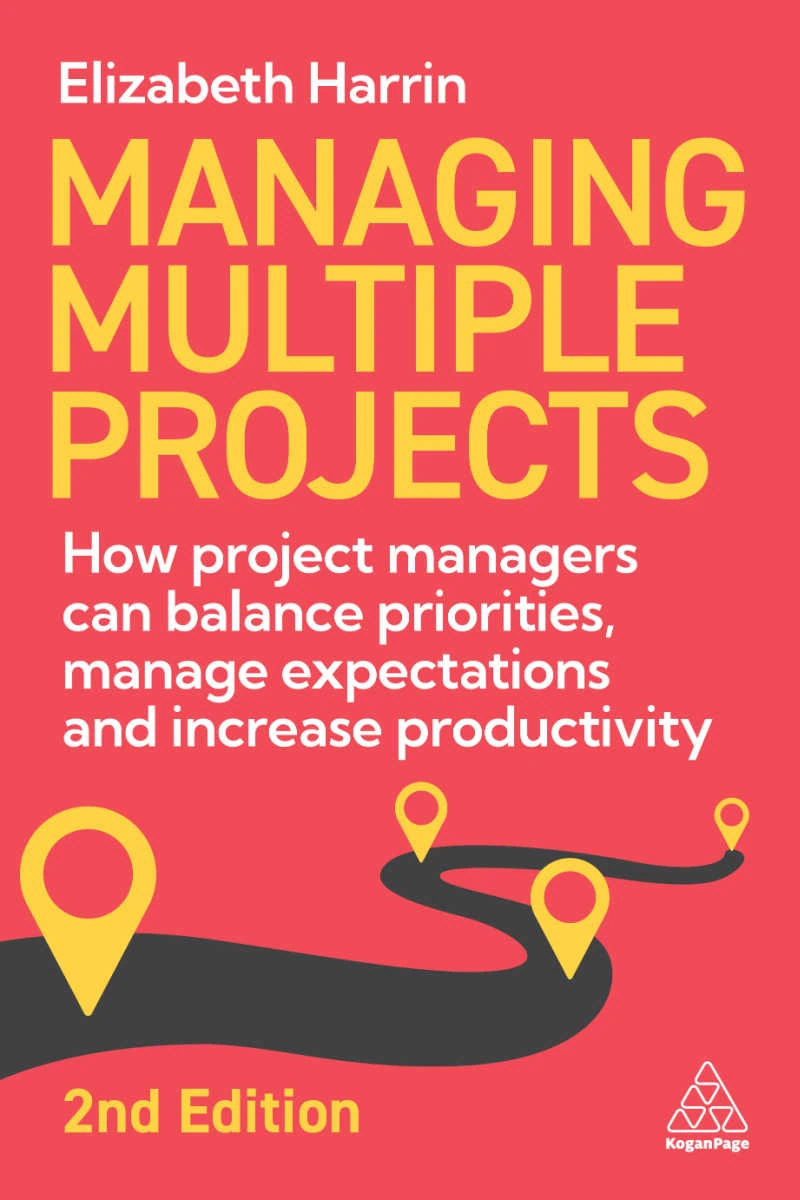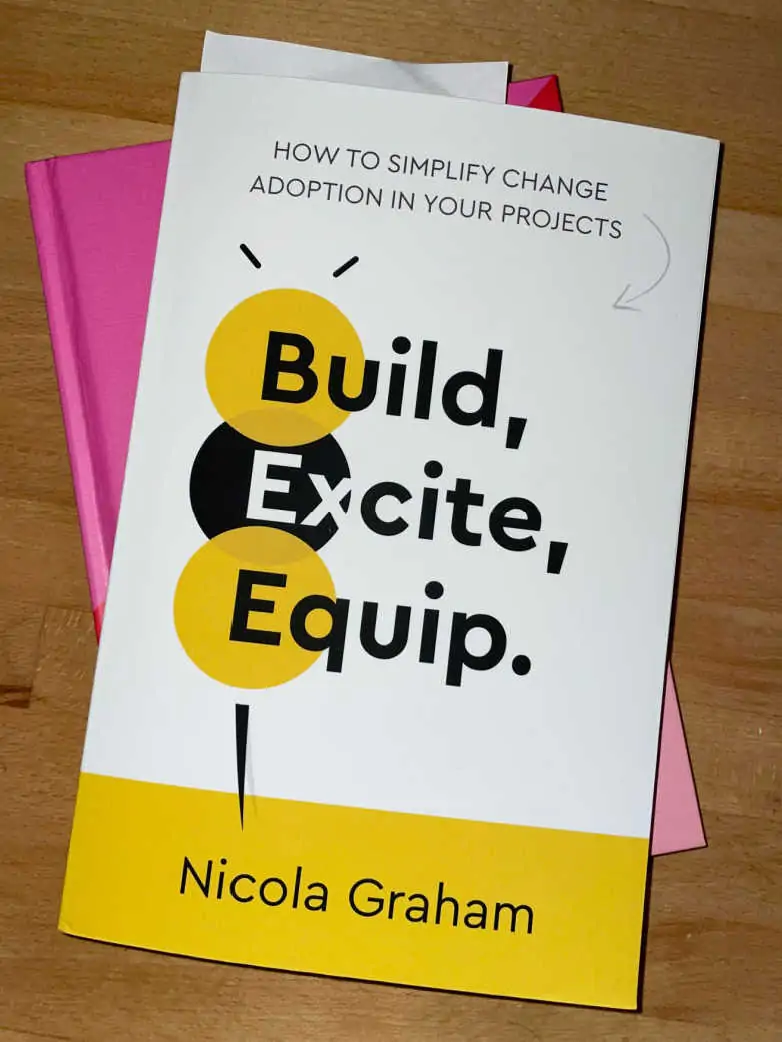Build, Excite, Equip: How to Simplify Change Adoption in Your Projects
Build, Excite, Equip: How to Simplify Change Adoption in Your Projects, by Nicola Graham, is a handbook for business
Given that project teams have to incorporate the business change elements to make sure projects land as expected – but often without the support of a dedicated change manager – this is a useful and much-needed book.
Build, Excite, Equip (BEE) is a simple 3-step methodology backed by neuroscience for making sure

What is BEE?
So how does it work? It’s very straightforward. BEE is formed of 3 phases, each split into 3 areas, so you’ve only got 9 steps to review and implement. They are:
Build: Organization, People, Project
Excite: Create, Inform, Market
Equip: Develop, Educate, Invigorate.
The book talks about each section of the method, with QR codes that link out to case studies and online tools (smart!). There is a checklist for each phase.
As with all the best approaches, Nicola makes it clear that you can pick and choose the parts of the method you want.
Practical tools for change management
What I really liked about the book was the practical tips and tools. For example, Nicola talks about the need for monitoring and KPIs to track success and the book includes a sample scorecard. There is an example communications plan, engagement plan (including a change freeze, which has caught me out in the past).
The tips might read like they are simple, for example, make sure your comms grab attention and built anticipation – yes, that’s pretty obvious. But how many project communications have you read where you’re asleep by the end the email announcement?
We need reminding of this stuff because work life is busy and we end up taking shortcuts that make our
Developing a knowledge repository
I love this stuff – my very first conference presentation was on the creation of a corporate intranet and it took a ‘knowledge’ angle. There is a whole chapter in the book about creating a knowledge repository for your project.
That repository is useful for training and support, but also for reuse in the future – because Nicola advocates that anything we can reuse should be reused on future projects.
The chapter is written in a way that means it should be tool agnostic, but I do wonder if it will date with time. Perhaps new ways of storing organizational knowledge will come along.
My summary
BEE gives you enhanced social currency within the organization. In other words, your projects will be more successful because they are more likely to slot into the fabric of the business without causing horrible disruption. There’s still going to be disruption, because that is what change delivery is all about, but it won’t be an awful experience for the people involved.
I love the inclusion of links to online tools and questionnaires so you can get going quickly.
It’s clear that Nicola has lived through many change initiatives and knows what works. For example, she writes about how to plan for what to do when people don’t show up to training. Because you know some of them won’t!
She also references the emotional response to closing out a big piece of work and how to manage that, which is something we think about for the people affected by the change, but not for the change makers themselves.
The book takes a hugely pragmatic, realistic approach based on what actually happens in organizations – not what theory says is going to happen. And that’s what makes it a useful book for any project manager to have on their shelf.
Best for:
- Project managers, project sponsors, team leaders who are expected to deliver change beyond just switching the thing on.
- Training managers looking to boost the efficacy of their training delivery in a project setting.
- People who want a step-by-step guide to how to actually ‘do’
change management without investing in certification or expensive training/accreditation.
Avoid if:
- You have a dedicated change manager on your project (maybe buy a copy for them?)
- You’re already an expert in business change e.g. Prosci certified, as this is aimed at people who need practical, quick wins.


